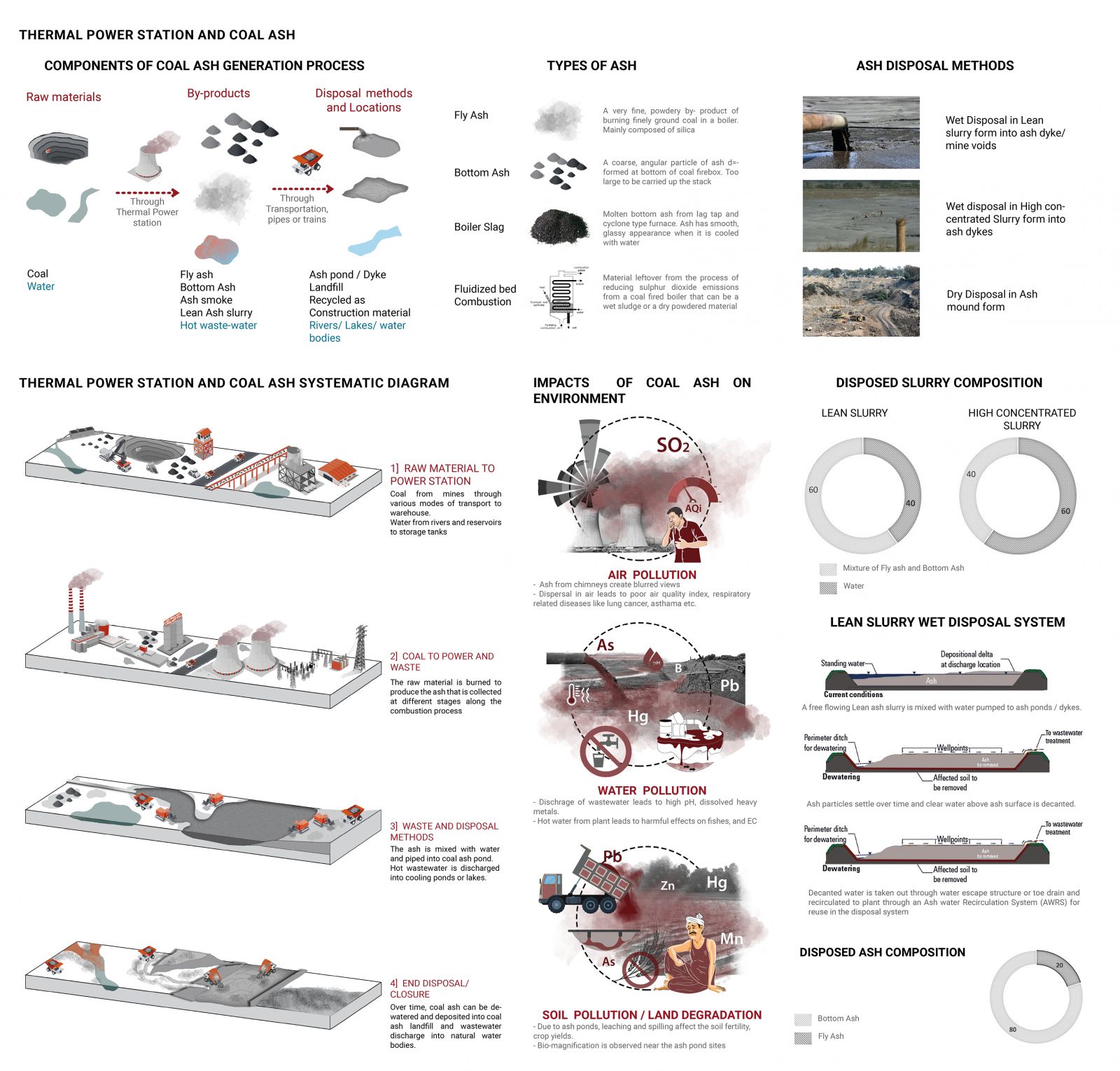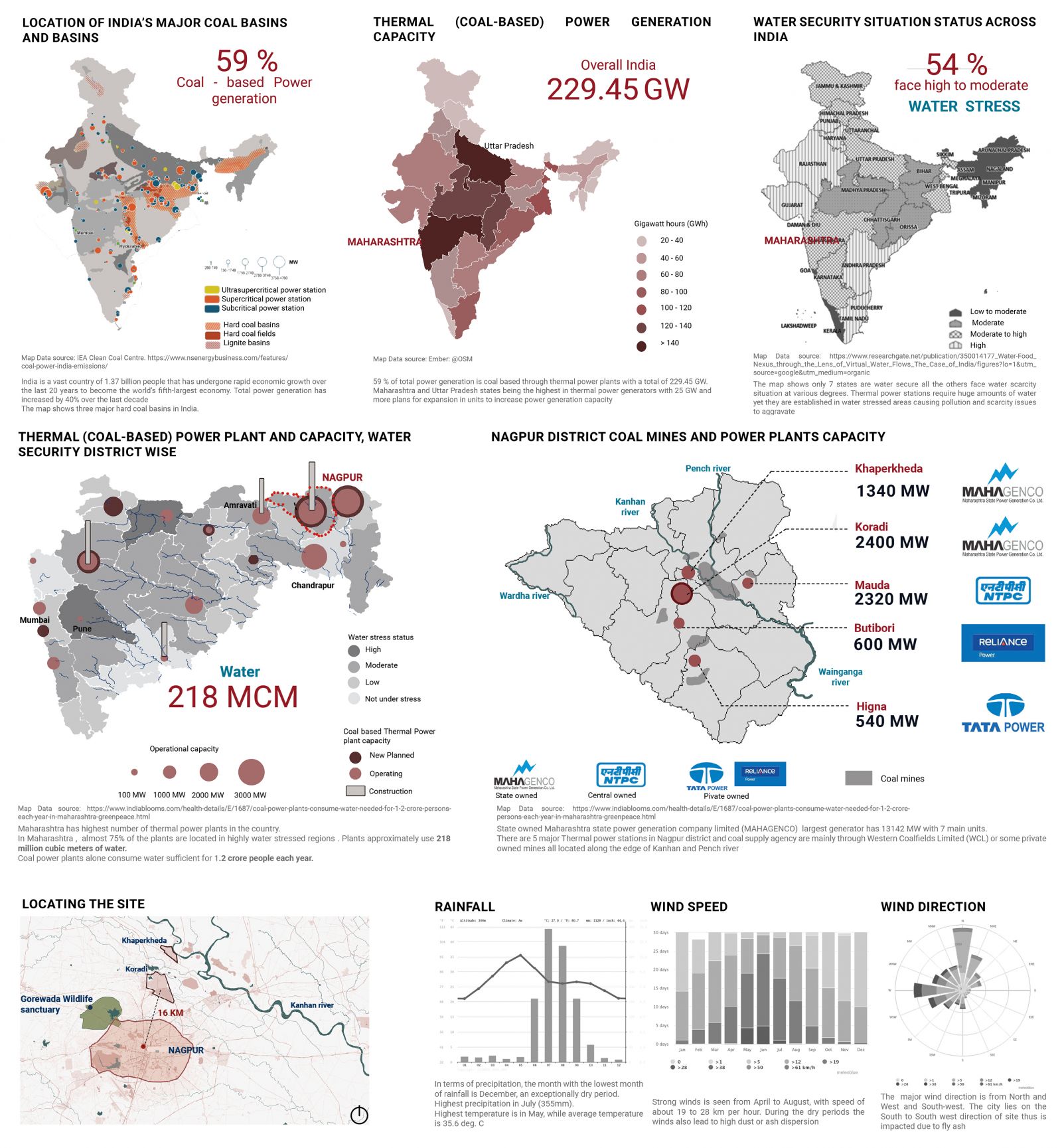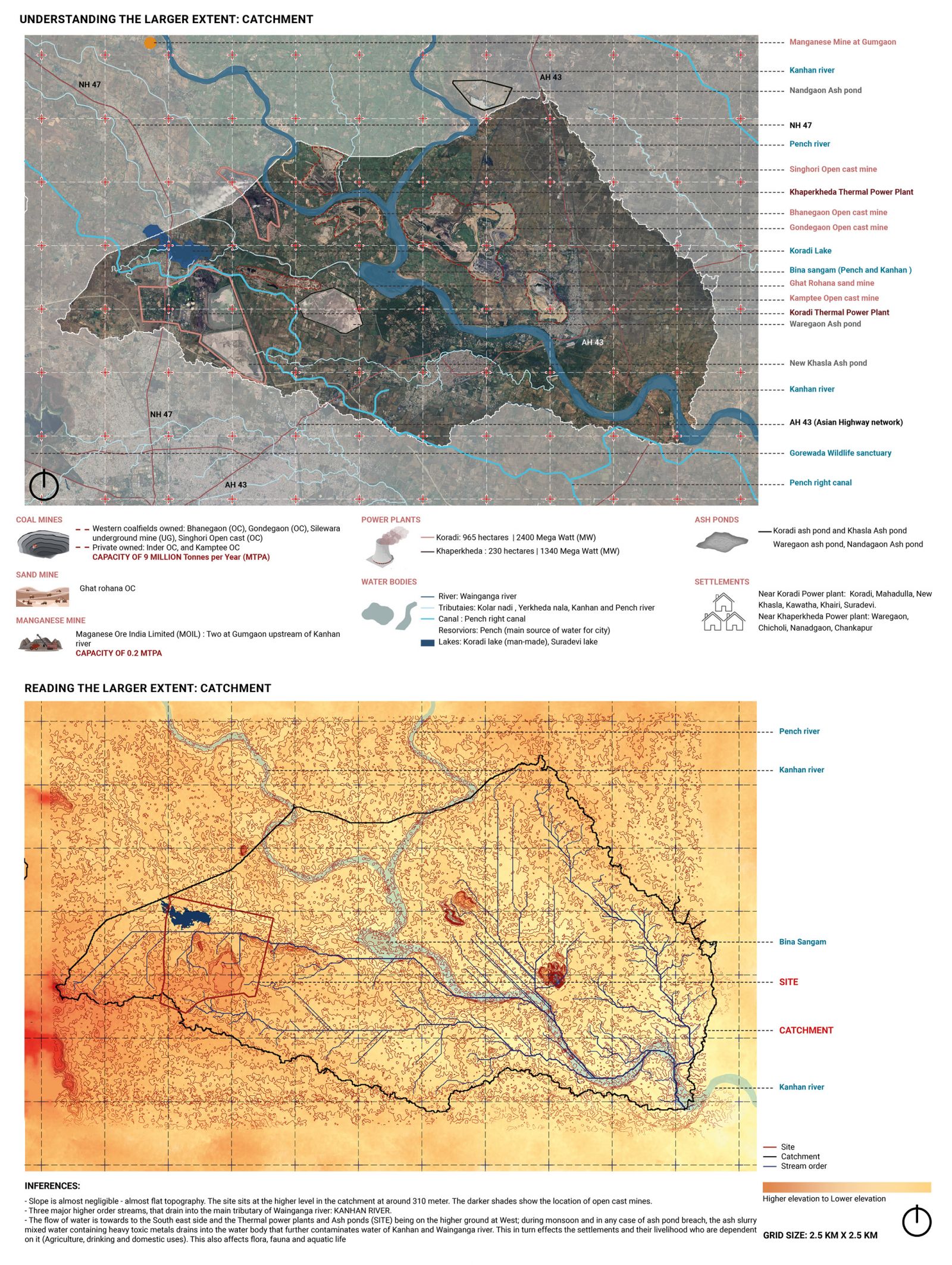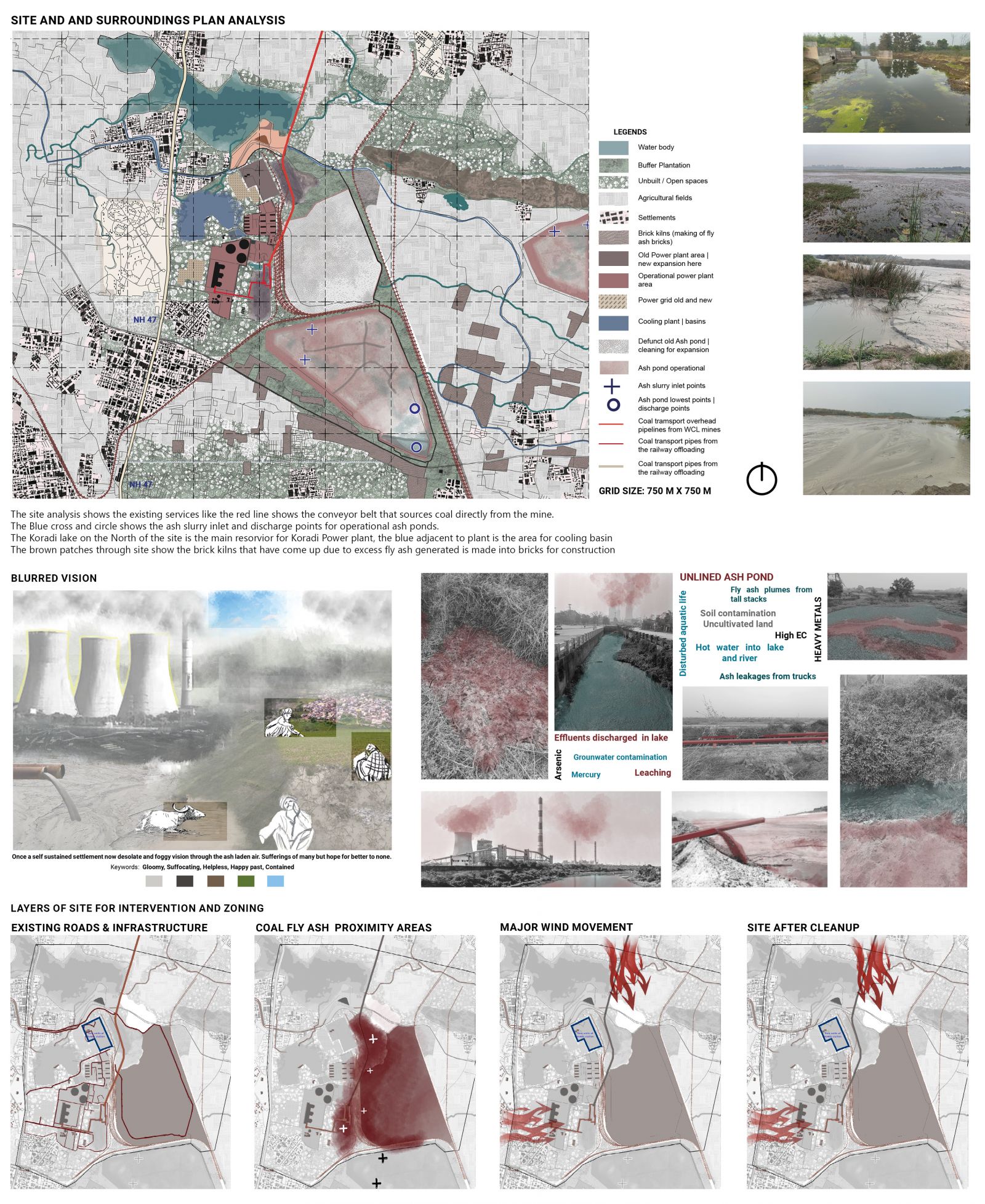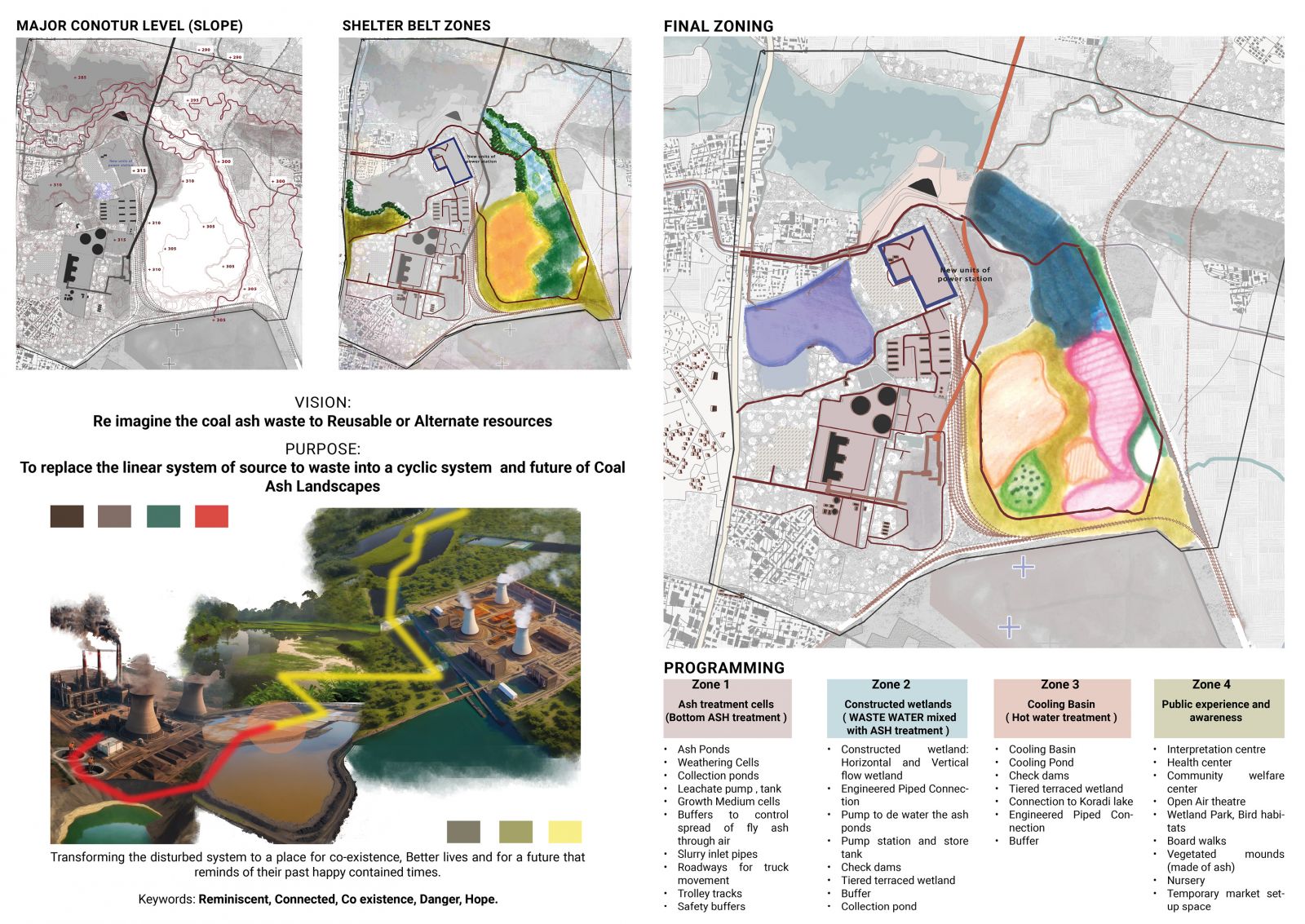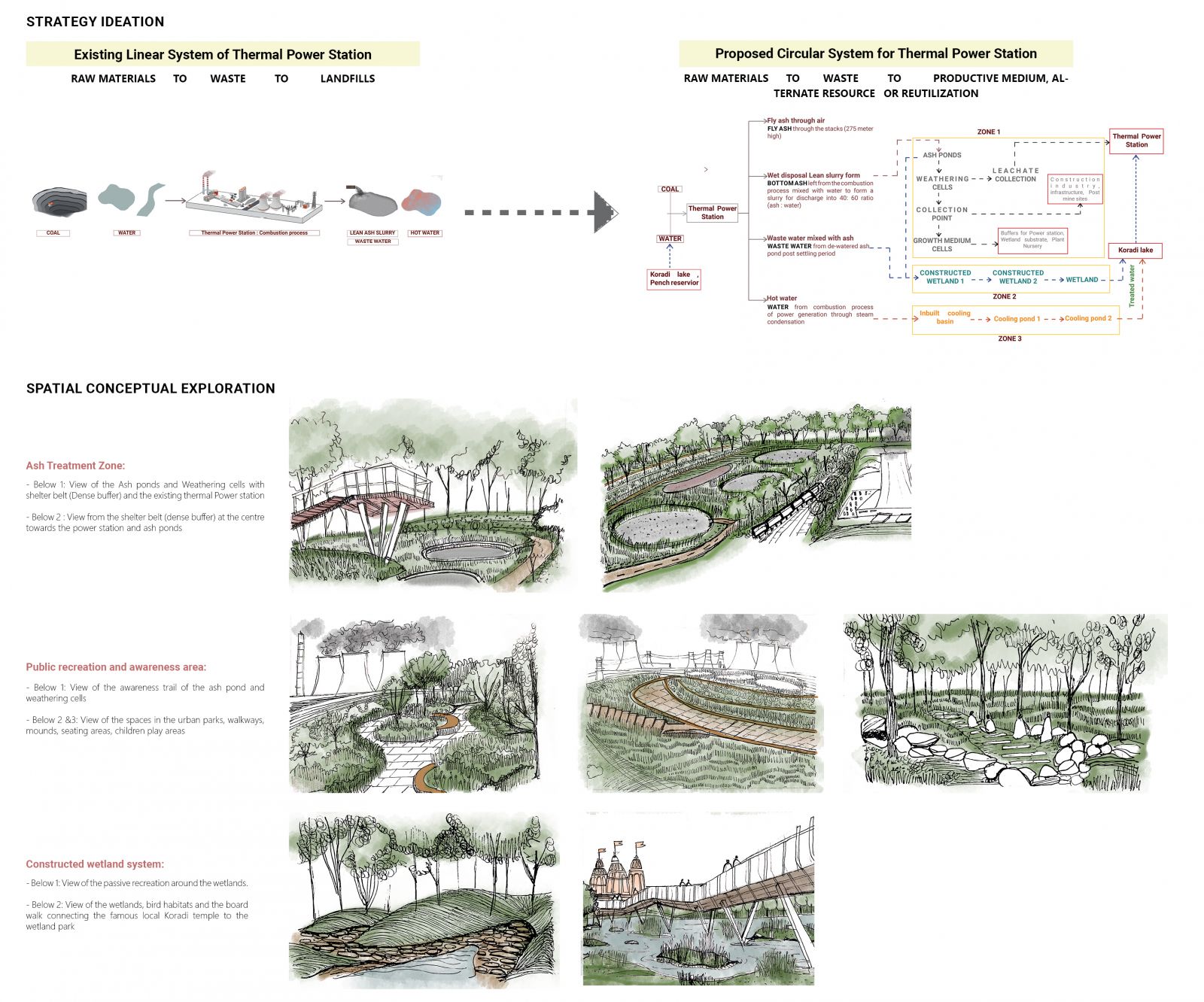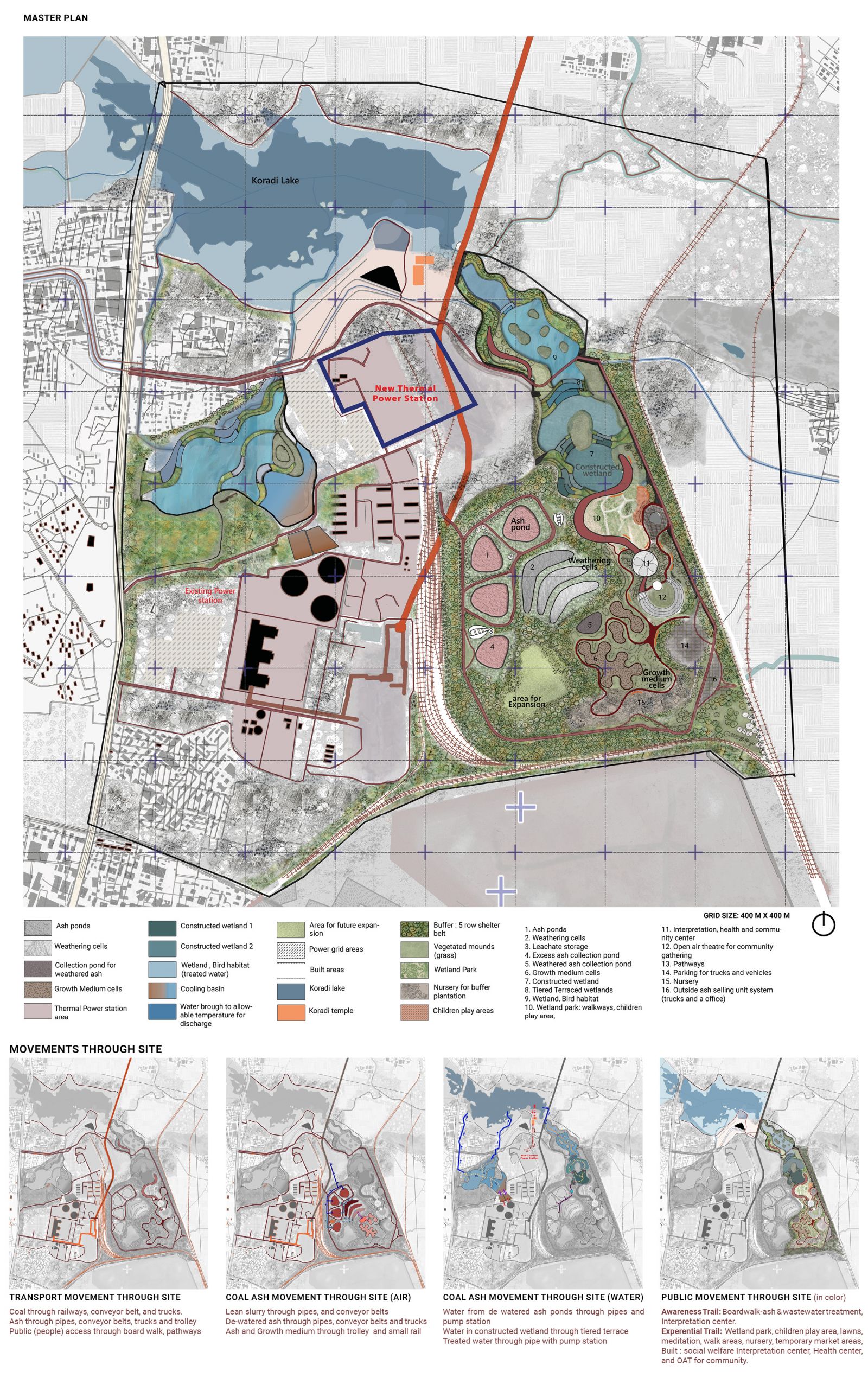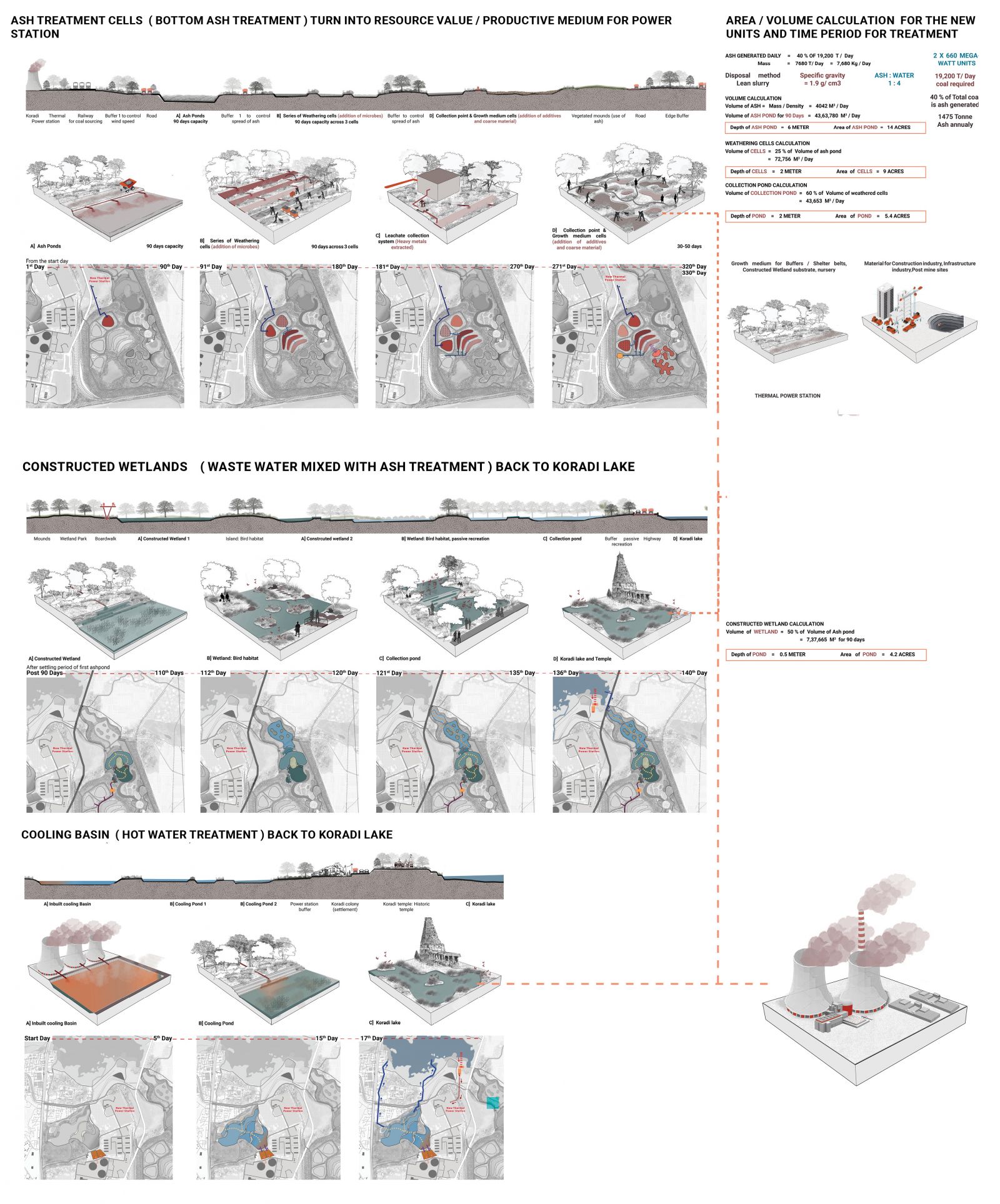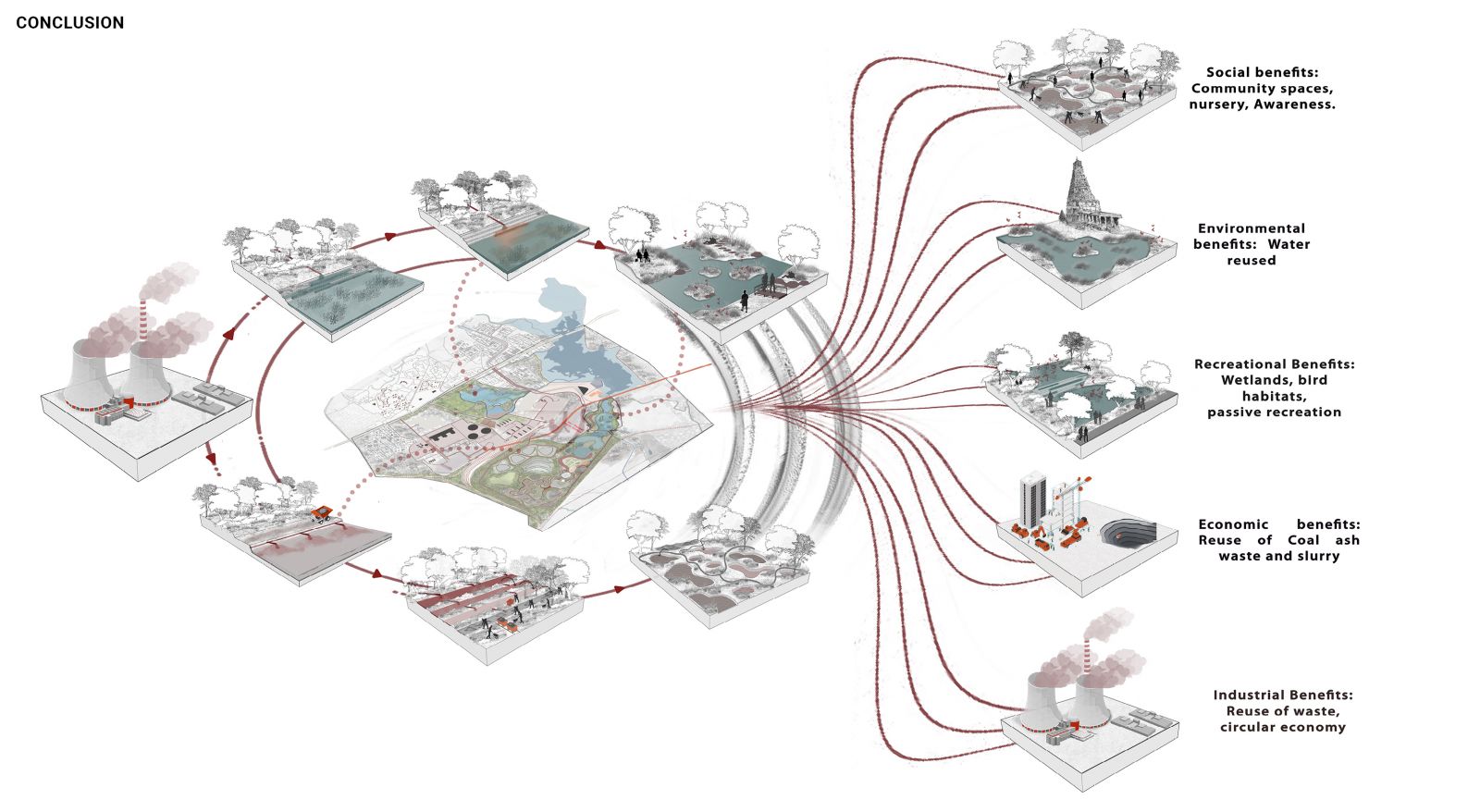Your browser is out-of-date!
For a richer surfing experience on our website, please update your browser. Update my browser now!
For a richer surfing experience on our website, please update your browser. Update my browser now!
With the boom in population and industrial growth, the need for power generation plants has increased manifold. In India, around 54% of power is generated through coal combustion, which produces ash that has a serious impact on the environment, humans, and animals alike. The demand for power has driven the expansion of coal-fired power plants. The Koradi thermal plant, near Nagpur, is currently undergoing tremendous expansion with the addition of two new units, each with a capacity of 660 MW, leading to exponential waste generation (ash and water). The project “From Ashes to Resources : Reimagining coal ash landscapes for future“aims at a sustainable and ecologically conscious approach to purposeful and strategic extraction or use of the ash, turning it into a resource. The project demonstrates a cyclic and partially self-sufficient system for converting the products of thermal power plants—ash and water—to reusable or alternate resources. By doing so, it aims to mitigate the negative ecological impacts associated with coal ash, such as land use issues, land degradation, water and air pollution, environmental impacts, and health hazards.
View Additional Work